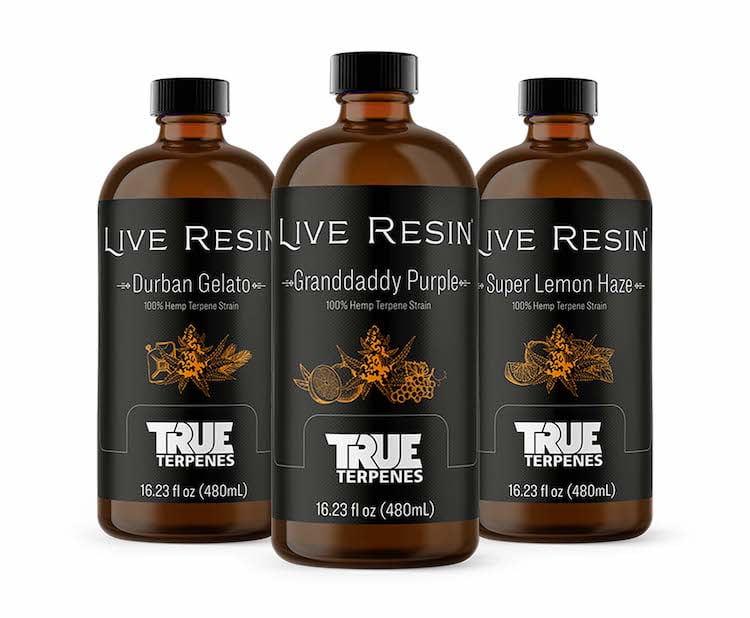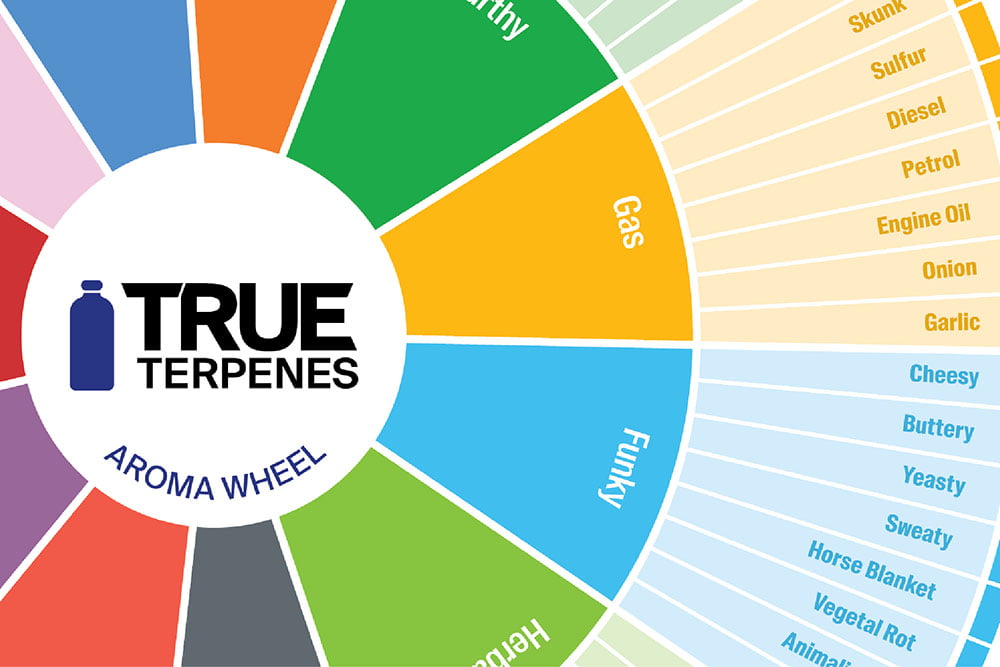June 21, 2023
A Guide to Hemp-Derived Terpenes

While many consumers are now familiar with hemp plants, they may not know what hemp terpenes are or how they interact with cannabinoids. These powerful aromatic compounds, present in all kinds of flowers and herbs, can support overall health and wellness. Learn more in this guide from True Terpenes.
What Are Hemp Terpenes?
Terpenes are chemical compounds that naturally occur in plants. They have a major effect on flavor and aroma: terpenes give black pepper its spiciness or make pineapple smell fruity and tropical. There are over 200 different terpenes present in the hemp plant. These terpenes are an important survival mechanism for plants – they help attract beneficial pollinators while deterring certain predatory insects and animals.
Difference Between Cannabis Terpenes and Hemp Terpenes
Cannabis and hemp are sometimes used interchangeably, but these terms are distinct. Both cannabis and hemp are plants from the same species, cannabis sativa. What makes them different is the amount of tetrahydrocannabinol (THC) present. Hemp has a composition of 0.3% THC or less, meaning it can’t produce psychoactive effects. Cannabis has higher THC levels than hemp and the concentration can vary by strain.
Cannabis tends to have a more diverse terpene profile than hemp, as well as higher amounts by volume. Thus, extracting terpenes from hemp plants is more resource-intensive – growers need more plants, soil, inputs, and irrigation to get the same amount of hemp-derived terpenes that a smaller number of cannabis plants would yield.
Terpenes vs. Cannabinoids
Cannabinoids are another type of organic compound found in hemp plants. While terpenes in hemp dictate fragrance, cannabinoids interact with the body’s endocannabinoid system (ECS). When cannabinoids bind to a person’s cannabinoid receptors, they can affect mood, memory, and pain perception.
Terpenes vs. Terpenoids
Terpenes occur naturally and are found in the trichomes of the hemp or cannabis flower. Terpenoids, in contrast, develop when terpenes are exposed to oxygen. For example, when hemp plants are harvested and dried, the terpenes transform into terpenoids.
Terpenes vs. Flavonoids
Flavonoids are another chemical compound found in hemp plants. While terpenes are responsible for fragrance, flavonoids can affect color and flavor, as well as smell. Cannabis strains can look and taste different depending on the mix of flavonoids that are present.
Hemp Terpenes and CBD
While hemp plants are notably low in THC, they still contain many different terpenes, as well as cannabidiol (CBD). When hemp-derived products are labeled as full-spectrum, they contain all the beneficial compounds that are naturally present in the hemp plant, including terpenes, flavonoids, and CBD.
The Benefits and Effects of Hemp Terpenes
There’s so much more research to be done on the therapeutic effects of terpenes. However, some of the known benefits include:
- Terpenes have antibacterial, antimicrobial, and antifungal properties.
- Some terpenes work as an analgesic.
- Terpenes may enhance the effects of cannabinoids.
Common Terpenes Found in Hemp
The average hemp plant will contain dozens of terpenes, and the composition can vary by cultivar. However, some of the most common terpenes in hemp include:
Limonene
This bright, aromatic terpene is also found in the peel of citrus fruits like lemons, limes, and grapefruit. Limonene is often used in cleaning products because of its pleasant scent.
Myrcene
Myrcene is a monoterpene, meaning it has two isoprene units and ten carbon atoms. It’s described as having a scent that’s peppery, floral, and fruity. You’ll find myrcene in mango, lemongrass, hops, and thyme.
Caryophyllene
This terpene is frequently found in herbs and spices, such as rosemary, cloves, and black pepper. It has a spicy, dry aroma that’s slightly sweet.
Linalool
Found in over 200 plants, this terpene is associated with sweet, floral sensory notes and is used in aromatherapy. Linalool is what gives lavender its pleasant, calming aroma, and it’s also present in cinnamon and bay leaves.
Pinene
One of the most abundant terpenes found in nature, pinene is what gives conifers their refreshing, woodsy scent. It’s prevalent in cedar and pine trees, as well as herbs like basil and parsley.
Terpinolene
This terpene is known for having a more complex, multidimensional aroma. With floral, piney, and citrusy notes, terpinolene is one of the scents you might associate with cannabis or hemp plants. It’s also found in nutmeg and cumin.
Humulene
This terpene is an isomer of beta-caryophyllene. Its fragrance is musky or earthy with a hint of spice. It’s found in cloves, sage, and hops.
Eucalyptol
As you might guess from its name, eucalyptol is the primary terpene in the eucalyptus plant. Its minty, fresh scent is used in products like chewing gum, toothpaste, and essential oils.
Terpineol
The term terpineol comprises a group of four monoterpenes:
- Alpha-terpineol
- Beta-terpineol
- Gamma-terpineol
- 4-terpineol
This terpene has a pleasant scent that can be woodsy or floral depending on which monoterpene is most prevalent.
Ocimene
This terpene is usually a secondary note in a hemp terpene profile. It’s sweet and fragrant and can be found in orchids and mint varieties.
Hemp Terpenes and the Entourage Effect
Research indicates one of the benefits of terpenes is that their presence enhances the therapeutic effects of THC and CBD, a theory known as the entourage effect. For example, cannabis can help with anxiety. Certain terpenes, like linalool, may increase the soothing and relaxing effects of smoking cannabis or using edibles.
What Is the Best Way to Consume Terpenes?
Terpenes can be consumed topically, orally, or through smoking or vaping. Hemp products, such as CBD lotions or gummies, will often be labeled with terpene profile information so that customers know which beneficial compounds are included. It’s important to note that terpenes must always be diluted before they are consumed or applied directly to the skin.
Hemp Terpenes for Non-Cannabis Products
Today, many consumers are looking for non-cannabis hemp products. CBD supplements and personal care products have grown increasingly popular for their reported benefits in treating anxiety, chronic pain, and sleeping trouble. CBD products may work more effectively when they contain terpenes. For example, limonene may help treat heartburn, while pinene has anti-inflammatory properties.
Choose True Terpenes
For comprehensive guidance on the science behind hemp terpenes, turn to True Terpenes. We’re a leading producer of terpene isolates and blends for food and beverage, cosmetic, and cannabis companies around the world. Our facilities are certified to meet FDA’s Current Good Manufacturing Practice (CGMP) regulations and we use rigorous testing for safety and quality. For more information, access our terpene education content or contact us today.



